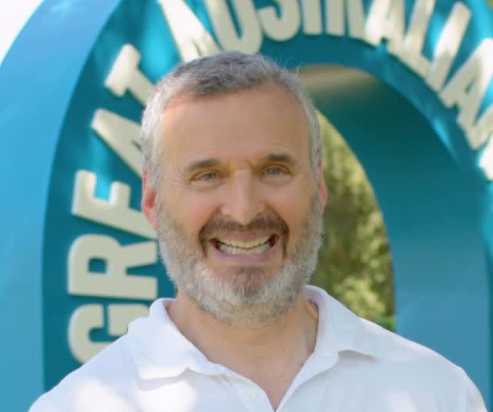With a projected net worth of $200 million in 2025, Phil Rosenthal’s career has taken him from creating comedies to enjoying street cuisine on several continents, demonstrating the remarkable versatility of creative storytelling in a variety of media. The riches is more than just a number on paper; it is evidence of a life dedicated to creating joy, enjoying meals, and making prudent investments, creating a very resilient legacy that keeps expanding.
Everybody Loves Raymond, his breakthrough hit, not only helped to define late 1990s family comedy but also, by consistently earning royalties, has greatly lessened the financial instability that many writers experience. It is remarkably similar to cultural giants like Seinfeld or Friends, where humor based on family dynamics is timeless and widely appealing, in that reruns and syndication continue to generate cash decades after its finale. Long after the sitcom’s popularity petered out, Rosenthal’s riches has been amazingly maintained by this consistent income.
Phil Rosenthal Bio Data, Career, and Net Worth
| Name | Philip Rosenthal |
|---|---|
| Born | January 27, 1960 (Age 65) – Queens, New York City, U.S. |
| Occupation | Television Writer, Producer, Show Host |
| Known For | Creator of Everybody Loves Raymond, Host of Somebody Feed Phil |
| Years Active | 1989–Present |
| Spouse | Monica Horan (m. 1990) |
| Children | 2 |
| Net Worth (2025) | Estimated $200 Million |
| Major Sources of Wealth | TV royalties, Netflix series, producing, real estate, books, speaking engagements |
| Authentic Source | Celebrity Net Worth |
In the years that followed, Rosenthal recast himself as the face of Somebody Feed Phil, something that not many television writers are able to accomplish. In an era where negativity frequently dominates media, this Netflix culinary and travel series turned him from a behind-the-scenes writer into a kind, on-camera guide whose optimism feels especially helpful. Rosenthal created a second act that is both financially successful and socially beneficial by genuinely appreciating foods and cultures.
Recently, Somebody Feed Phil made a comeback with its eighth season, highlighting undervalued culinary cultures and towns like Boston. Rosenthal conveys a very clear message that appeals to audiences all across the world: food unites communities. He does this with his captivating humor and genuine curiosity. His presence is more about personal connection than culinary skill, and this strategy has significantly changed how people watch food television by making it available to viewers from all walks of life.
The breakdown of Rosenthal’s sources of revenue demonstrates how well his career has been run. Everybody Loves Raymond royalties are still substantial. He has both financial stability and cultural recognition because to his Netflix arrangement. In addition to television, he earns money via speaking engagements and book sales, and his real estate holdings have grown into considerable assets at remarkably low costs. When combined, these revenue streams show how diversity can be incredibly resilient in maintaining net worth when done with patience and foresight.
Additionally, rumors of a possible reunion of Everybody Loves Raymond are persistent. Although nothing has been confirmed as of yet, Rosenthal has made it clear that the door is never completely closed. If a resurgence of this kind were to take place, it might do so much more quickly in terms of drawing in nostalgic viewers than many contemporary sitcoms do in terms of drawing in new ones. Because of the long-lasting love for the characters on the program, any reunion would be extremely successful in terms of both money and culture.
Rosenthal’s work promotes grounded values, which are reflected in his daily life. Since 1990, the actress and her spouse, Monica Horan, have maintained a very adaptable balance between their personal and professional lives. Together, they have created a family life that reflects the themes of love, comedy, and resiliency at the heart of Rosenthal’s profession. Horan’s appearance in Everybody Loves Raymond brought realism. Raised in this innovative and supportive atmosphere, their two kids serve as a testament to the long-term advantages of having a solid personal foundation.
It’s common to draw comparisons to his creative equal, Ray Romano. Rosenthal developed his riches by writing, producing, and eventually hosting, whereas Romano, who starred as the face of Everybody Loves Raymond, concentrated his wealth-building on performing and stand-up. Their partnership was especially creative, fusing Rosenthal’s storytelling instincts with Romano’s humorous delivery. Decades later, the synergy produced a cultural icon with incredibly effective commercial rewards.
However, Rosenthal’s impact goes beyond sitcoms. Although he takes a very different approach, his position in the food media places him alongside legends like Anthony Bourdain. Rosenthal leans toward warmth, humor, and joy, whereas Bourdain tended toward gritty and unvarnished storytelling. Because of this positioning, Somebody Feed Phil has become very adaptable for families, providing a reassuring yet motivating experience, especially during periods when viewers are in need of optimism.
In terms of culture, Rosenthal has contributed to the transition from written sitcoms to genuinely human lifestyle stories. In the last ten years, viewers have embraced streaming services and drastically decreased their dependency on traditional broadcast television. Rosenthal’s smooth transition to Netflix not only kept him current but also made him a household figure among younger audiences. This flexibility has significantly increased his net worth and demonstrated his capacity to prosper in the face of industry changes.
It is important not to undervalue his work’s social significance. While Somebody Feed Phil promotes global empathy by emphasizing food as a common language, Everybody Loves Raymond reminded viewers of the hilarity in ordinary life. Because of these accomplishments, Rosenthal’s career has been both financially successful and socially significant during a period when cultural conflicts frequently make news.

